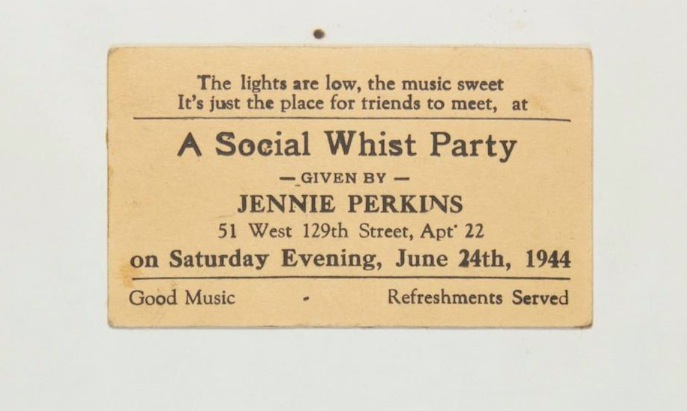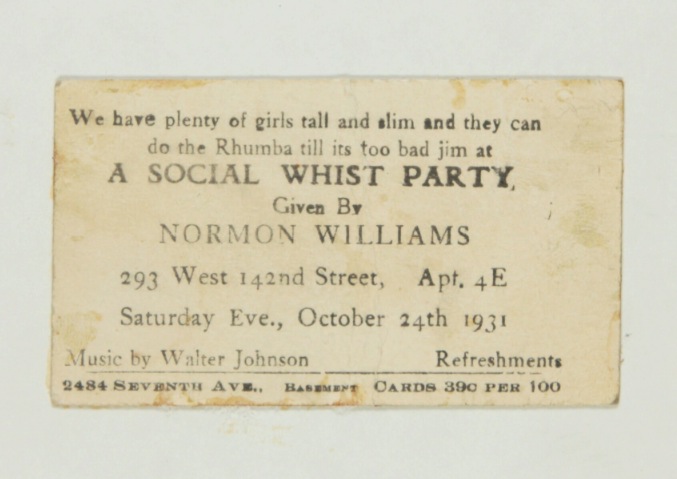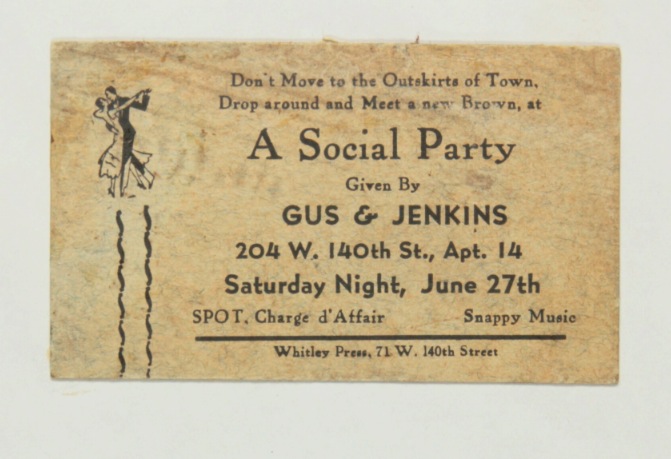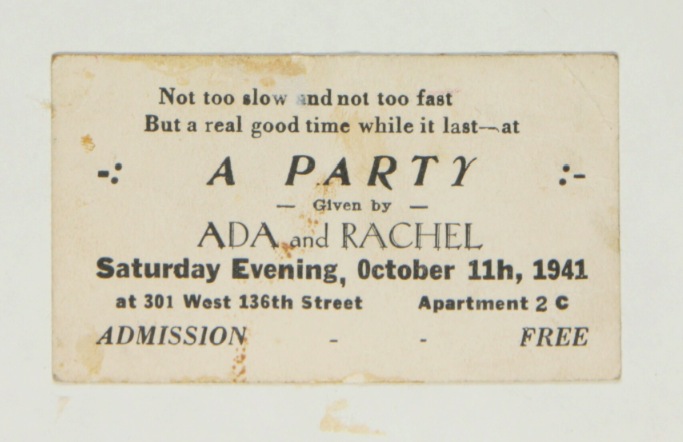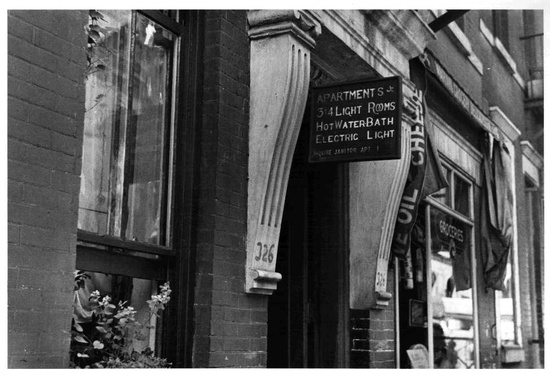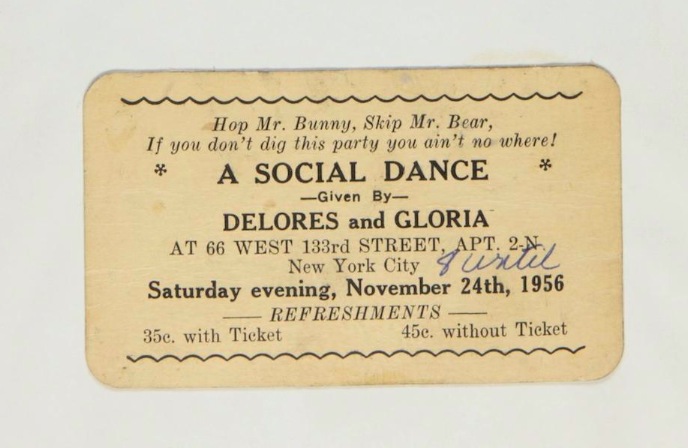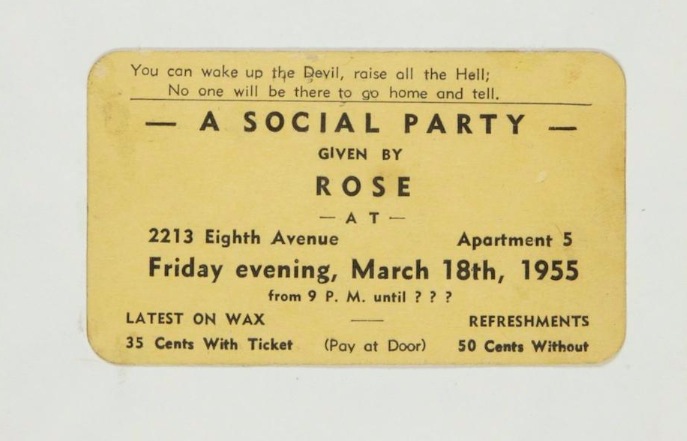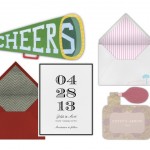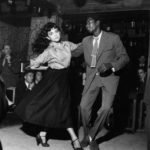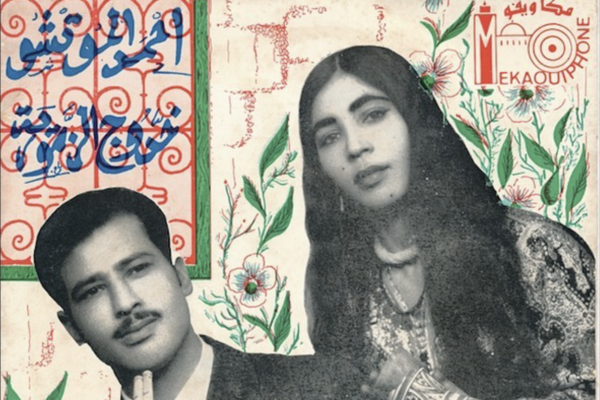The weekend is fast approaching, we’re looking forward to letting our hair down, maybe go dancing, listen to some music and have a glass or two. In early 20th century Harlem, New York, these cards would have been your ticket to a good time. They advertise what was known as “Harlem rent parties”, a social phenomenon that began in the 1920s where African American tenants in Harlem would essentially raise money to pay their rent by throwing a party.
These parties, always held on Saturdays (pay day), would often run well into early Sunday morning, slowing down only after seven or eight o’clock. Hosts would charge around 25 cents for admission, roll back the living room carpet, dim the lights and seat the musicians or band they had hired for the night.
An old documentary imagines what it would have been like inside a Harlem Rent Party:
Importantly, Harlem rent parties played a major role in the development of jazz and blues music. The popular phrase “cutting a rug”, is thought to have come from the Harlem rent parties as they were often the location of so-called ‘cutting contests’, which involved jazz pianists taking turns at the piano, attempting to out-do each other. Hosts would provide homemade fried chicken, pork chops, pigs feet and potato salad for sale, piled up high on tables set up in the kitchen or at a makeshift bar in the hallway.
Soon enough, they began advertising their rent parties on business cards that would have poetic jingles on them to entice guests. The Prohibition however was still in effect at this time and so handing out these cards was a risk if they weren’t given to the “right” people. These particular examples are part of a collection of personal items held at Yale University’s Beinecke Rare Book & Manuscript Library that belonged to Langston Hughes, a pioneer of the Harlem Renaissance.
The origins behind the Harlem rent parties are a little more sobering however. During the early nineteen twenties when cheap industrial labor was in high demand, it’s estimated that more than 200,000 African Americans migrated to Harlem, mostly fresh from the cotton-picking fields of the Deep South. They were segregated in a small section of Manhattan where as many as five to seven thousand people would have been known to live in a single block.
Upon their arrival, the Harlem property owners cranked up the rent higher than anywhere else in New York and profited greatly while families piled on top of each other in very unwholesome living spaces.
Rents were doubled and tripled by their landlords, predominantly Jewish shop-owners and property-owners who were filling a need where white business owners would not venture. Tenants under pressure had to come up with ways to pay off their increasing debts and help out friends in need.
Organising social occasions was a way of escape from a monotonous, humdrum week of low-income labor and nviting people over as paying party guests before the landlord’s monthly visit was a happy; ‘timely thought’. Everyone had a good time and it cost less than attending any public entertainment venues. It proved such a fun and easy way to pay the rent that it became an overnight rage and the Harlem Rent Party was born.
Every weekend there would be parties, usually always on Saturday nights so they could sleep in the next day, although Thursdays often proved a popular night as well. Some parties were more wholesome than others and the popular phenomenon soon caught on with small-time pimps and madames who used the rent parties as ways to come out into the open and attract the likes of lonesome travelling salesmen, truck drivers or simply young, naive and unattached males and females who were new to the city and prowling the night in search of adventure.
An apartment with a red, pink or blue light in the window and the sound of piano music would lure them in. A hostess would greet them and after some initial introductions by the refreshments table, there would be a night ahead of non-stop drinking, wild dancing, and obscene sexual behaviour for all to see.
So, what are your plans this weekend?!
Sources: American Life Histories: Manuscripts from the Federal Writers’ Project, 1936-1940, Beinecke Rare Book & Manuscript Library


